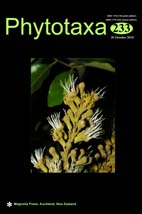Abstract
Besleria macropoda, a rare and poorly known gesneriad endemic to Costa Rica, was recently collected for the first time on the southern slopes of the Fila Costeña (Puntarenas Province, SE Costa Rica). The collection considerably widens the geographic distribution to the southeastern part of Costa Rica. Moreover, the following unique characters not previously addressed in the literature were observed and are documented here: (1) The elongate peduncles of the inflorescences are clamped in a channel formed by the sunken midrib of the leaf, rendering the flowers and fruits positioned in the center of the leaf blade. The epiphyllous appearance of the inflorescence on the leaf surface enhances contrasting colors that may aid the pollination and/or fruit dispersal. (2) The fruits split open irregularly, with the fleshy carpel lobes becoming reflexed. This fruit dehiscence deviates from the indehiscent berries that typically characterize Besleria. This results in displaying a globose head of red placental tissue covered by tiny, red seeds. A preliminary survey of Besleria fruits suggests that this peculiar fruit type is present in at least 15 species representing almost 8% of the genus. Fruit morphology of Besleria is therefore less uniform than previously recognized and the “indehiscent berry” can no longer serve as a distinctive generic character of Besleria, which necessitates consideration in floras and identification keys. In addition, a list of herbarium specimens, lectotypification, a distribution map, IUCN red list assessment and an amended key to diagnose Besleria relative to Gasteranthus are provided.

